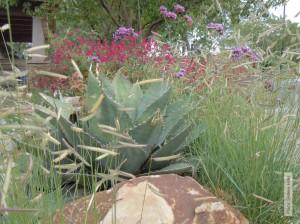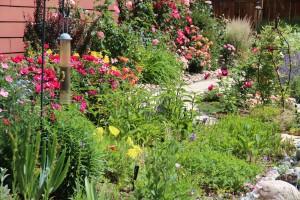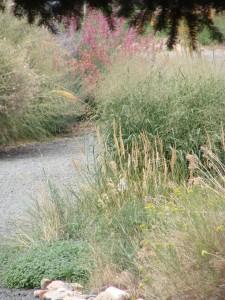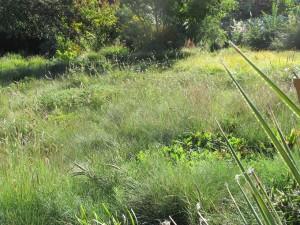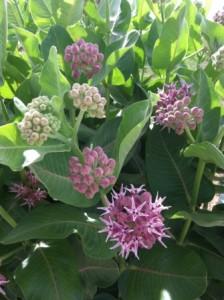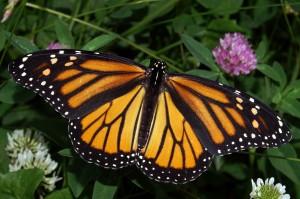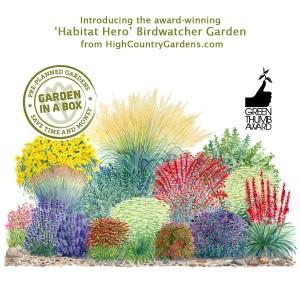Winter is the time for dreaming garden-dreams, imagining the habitat you'll plant next year, the songbirds and pollinators you'll nurture with your healthy and abundant patch of earth. Here, just in time for the holidays, are new photos from the 2013 Habitat Hero gardens to inspire your garden plans.
Mix It Up
Think out of the box. Try new plants, new colors and textures. Like the Parry's agave in the border above, combined with a drift of 'Blonde ambition' blue grama, 'Raspberry' salvia, and sedum.
This low-water, low-maintenance planting by the clubhouse at the City of Westminster's Legacy Ridge Golf Course provides food for hummingbirds and butterflies, cover and seeds for songbirds, and inspiration for all.
Get Your Color On
Hummingbirds and pollinating insects are cued by certain colors. Jazz up your garden beds with colorful, nectar- and pollen-providing flowers. And then make notes on which critter loves what plant.
If a certain plant seems to really speak to hummingbirds, songbirds, butterflies or other pollinators, plant more. Abundance is not a bad thing when you're providing habitat—as long as your garden is water wise and healthy.
Plant a Prairie
Grasslands are one of the ecological "backbones" of the Plains and Rocky Mountain region. Give your garden a prairie boost with native bunch grasses, wildflowers and shrubs, whether in a formal border or an entire swath.
One tip: don't mow your prairie in fall—the grasses provide fall and winter habitat for butterflies in chrysalis and seeds for songbirds. Wait until spring to give it a trim, just as its new green is showing.
SAVE MONARCHS: PLANT MILKWEED
Monarch butterfly populations in the Central and Eastern US crashed this year, dropping as much as 90 percent. Entomologists blame the dramatic decrease on agricultural herbicides wiping out native milkweeds, the caterpillar's main food plant.
Monarchs and milkweeds are indelibly linked: no milkweed means no monarch caterpillars, and none of the iconic adult butterflies wafting south on origami-paper-thin wings to overwinter in the mountains of central Mexico. No monarchs making their way north in spring, generation by generation.
Help monarch populations revive by planting native milkweeds in your garden. For inspiration, visit the City of Aurora's Xeriscape Demonstration Garden and Wildscape, one of the 2013 Habitat Hero Gardens. Look for the milkweed—and the monarchs.
Plant a Habitat Garden
Treat yourself and your garden—along with the wildlife you nurture to a pre-planned habitat garden. We're partial to this award-winning Habitat Hero Birdwatcher's Garden designed by renowned plantswoman Lauren Springer Ogden. See photos of the individual plants on our Pinterest board.
Full disclosure: this garden-in-the-box is offered exclusively by our partner High Country Gardens, who supports the Be a Habitat Hero project. We love the collection for its gorgeous combination of plants, each of which Lauren selected for its value as songbird and pollinator habitat.
As you dream next year's wildlife garden into being, we here at Habitat Hero wish you a joyous holiday season. May your garden dreams flourish!
By Habitat Hero
Stay in the Know
Sign up for emails to stay up to date on how you can help and enjoy birds in Colorado, Wyoming, and Utah.

